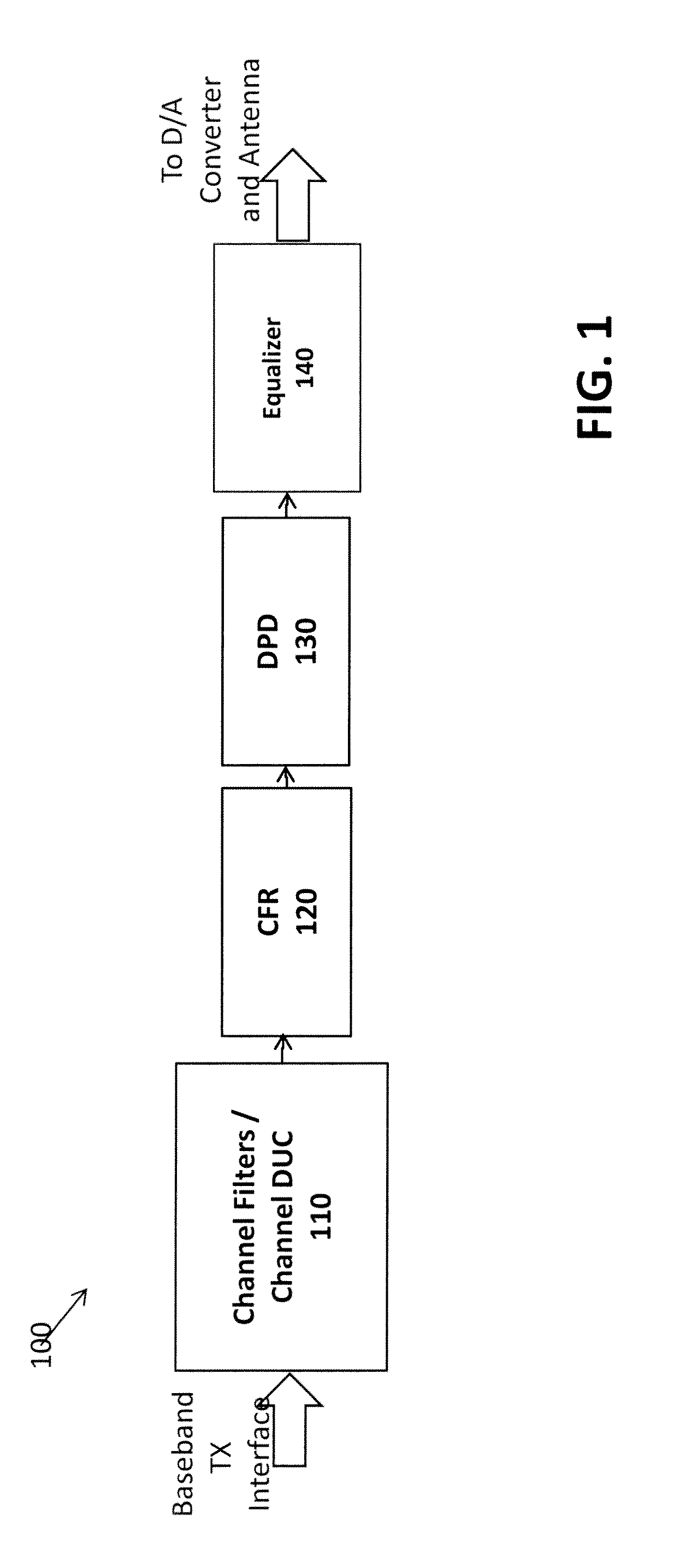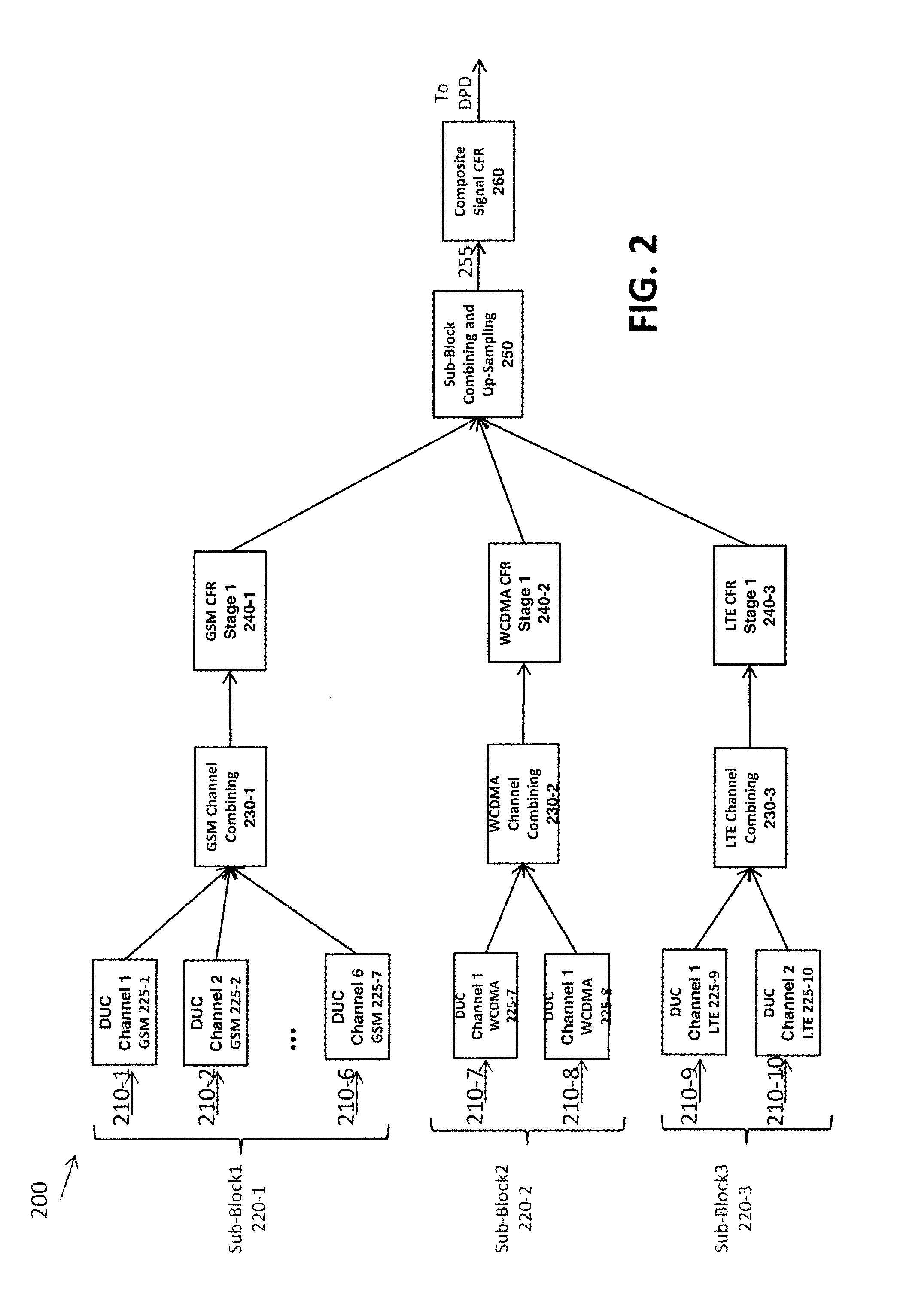Multi-stage crest factor reduction (CFR) for multi-channel multi-standard radio
a multi-channel, multi-standard radio technology, applied in the field of digital signal processing techniques, can solve the problems of composite signal crest factor reduction on the combined signal at a high sampling rate (with significant complexity), and the efficiency of power amplifiers (pas) employed in wireless base stations is affected, and the technology typically has different latency requirements
- Summary
- Abstract
- Description
- Claims
- Application Information
AI Technical Summary
Benefits of technology
Problems solved by technology
Method used
Image
Examples
Embodiment Construction
[0015]FIG. 1 illustrates portions of an exemplary transmitter 100 in which aspects of the present invention may be employed. As shown in FIG. 1, the exemplary transmitter portion 100 comprises a channel filter and digital up conversion (DUC) stage 110, a crest factor reduction (CFR) stage 120, a digital pre-distortion (DPD) stage 130 and an optional equalization stage 140. Generally, the channel filter and digital up conversion stage 110 performs channel filtering using, for example finite impulse response (FIR) filters and digital up conversion to convert a digitized baseband signal to an intermediate frequency (IF). As indicated above. the crest factor reduction stage 120 limits the PAR of the transmitted signal. The digital pre-distortion stage 130 linearizes the power amplifier to improve efficiency. The equalization stage 140 employs RF channel equalization to mitigate channel impairments.
[0016]When the transmitter 100 is embodied as a multi-radio, multi-channel system, a base-...
PUM
 Login to View More
Login to View More Abstract
Description
Claims
Application Information
 Login to View More
Login to View More - R&D
- Intellectual Property
- Life Sciences
- Materials
- Tech Scout
- Unparalleled Data Quality
- Higher Quality Content
- 60% Fewer Hallucinations
Browse by: Latest US Patents, China's latest patents, Technical Efficacy Thesaurus, Application Domain, Technology Topic, Popular Technical Reports.
© 2025 PatSnap. All rights reserved.Legal|Privacy policy|Modern Slavery Act Transparency Statement|Sitemap|About US| Contact US: help@patsnap.com



